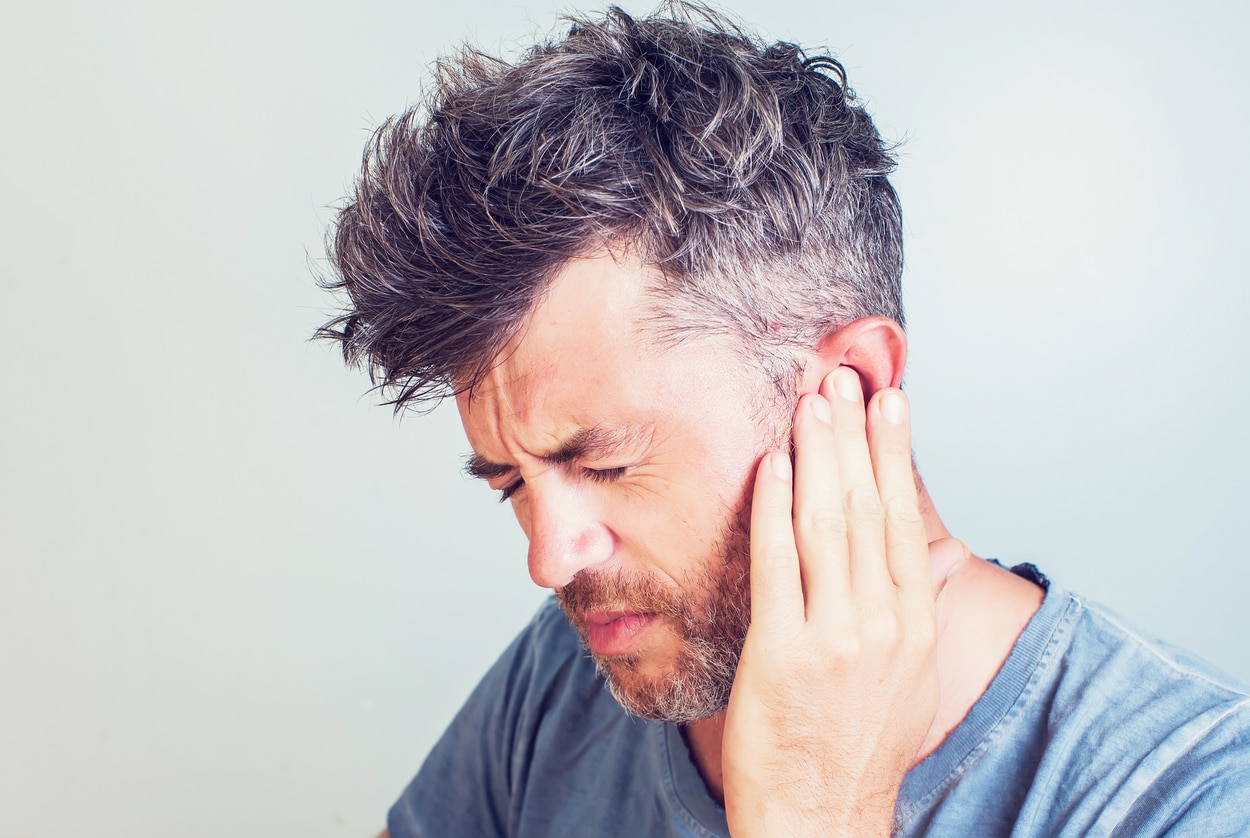While earaches are most common in children, adults are susceptible to ear pain too. Fortunately, not all cases of ear pain indicate something dangerous, like an infection. Identifying the cause of your ear pain is the first step in finding relief. Below are some of the most common causes of discomfort in the ear.
Impacted Earwax

Earwax is a naturally occurring substance that lubricates the ear to prevent dryness and itchiness and protects the ear by trapping bacteria and debris. The ear is self-cleaning in that earwax works itself out of the ear canal through natural jaw movements when talking and chewing. Sometimes, however, it can become impacted and cause ear pain, among other symptoms.
If you suspect impacted earwax, do not stick a cotton swab, hair pin or any other pointy object into the ear, or you risk pushing earwax further down or even puncturing the eardrum. Instead, purchase over-the-counter eardrops to soften the wax, and irrigate the ears with warm water in the shower or using a bulb syringe.
Air Pressure
In most cases, the ear does a great job of equalizing pressure on both sides of the eardrum – evidenced by the slight popping sound you hear when you swallow. But quick, drastic changes such as on an airplane or elevator can cause pain and discomfort. To avoid these problems, especially while flying, try…
- Chewing gum, sucking on hard candy, yawning or swallowing during takeoff and landing.
- Be awake for the plane’s descent.
- Pinch your nose, close your mouth and exhale gently to pop your ears.
- Avoid air travel and diving when you have a cold, sinus infection or allergy symptoms.
Swimmer’s Ear
If water becomes trapped in the ear after swimming or other water activities, an infection known as swimmer’s ear may result, which involves symptoms such as:
- Itchiness/redness inside the ear canal
- Pain/discomfort
- Drainage of clear, odorless fluid
- Fever
The most important thing to note is you should not insert anything into the ears to try to get them to drain. In addition to the risks listed above, if you scratch the inside of the ear canal, this will provide an opening for bacteria to grow. Instead try…
- Tilting your head toward the affected ear and pulling gently on your earlobe.
- Moving your jaw by yawning or chewing gum, then tilting the affected ear down.
- Pinching your nose, closing your mouth and gently exhaling to open the Eustachian tubes.
- Creating a suction with your palm and pushing gently against the affected ear with your head tilted down.
- Resting the affected ear on a warm compress or blowing warm air from a hair dryer on the low setting into the ear canal.
For more information about ear pain or to schedule an appointment with an ENT, contact the experts at ENT of Athens.